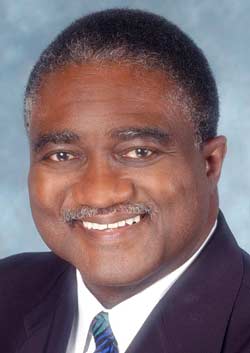 Any compromise President Obama reaches with Congress will fail to significantly reduce Black unemployment unless the plan is crafted to address joblessness in the three industries where African-American workers are concentrated – government jobs, education and health services.
Any compromise President Obama reaches with Congress will fail to significantly reduce Black unemployment unless the plan is crafted to address joblessness in the three industries where African-American workers are concentrated – government jobs, education and health services.
According to a University of California-Berkeley Labor Center research brief titled, "Black Workers and the Public Sector," 20.9 percent of African-Americans are employed in what is called the public administration sector and 18.5 percent work in education and health services.
The report, written by Steven Pitts, shows some variations within the Black community. For example, most Black males (18 percent) are employed in the public administration sector. However, most African-American females (27 percent) are employed in education and health services. Public administration is the second-leading employer for Black women at 23.3 percent.
But the gender differences don't stop there. After public administration, the next highest employers for Black men are manufacturing (14.7 percent), wholesale and retail trade (14.3 percent), professional and business services (9 percent) and educational and health services (8.4 percent).
By contrast, after education and health services (27 percent) and public administration (23.3 percent), Black women were employed in wholesale and retail trade (11.3 percent), professional and business services (7.2 percent) and manufacturing (7.1 percent).
Thus, when looking at the top five employment industries, the sector most likely to hire Black women – education and health services – was the one least likely to hire African-American men. Any successful job plan must take into account these gender differences.
UC-Berkeley Labor Center research challenges President Obama's contention that a rising tide lifts all boats.
In a 2009 interview, Obama said: "The most important thing I can do for the African American community is the same thing I can do for the American community, period, and that is to get the economy going again and get people hiring again."
But as the Labor Center brief observes, "…Often policy prescriptions that, on the surface, are race-neutral can have decidedly racial impacts."
That's crucial when considering Black unemployment is at the highest level in 27 years. As the U.S. Department of Labor report titled, "The Black Labor Force in the Recovery" notes, the unemployment rate of Blacks in 2007, the year the recession began, was 8.3 percent, compared to 4.1 percent for Whites and 5.6 percent for Latinos.
Overall unemployment peaked at 10.1 percent in October but fell to 9.1 percent in July and August. Black unemployment had peaked at 16.5 percent in March and April of 2011. But that was eclipsed last month when Black unemployment rose to 16.7 percent – twice as high it was when Obama assumed office.
Although President Obama shouldn't be blamed for the increase in Black unemployment, he does have a responsibility to effectively address the issue. And there are no simple solutions.
There is a tendency to discuss Black unemployment in the abstract, but a look at the numbers reveals gender and racial variations. The overall unemployment rate in August was 9.1 percent. The unemployment rate for Whites was 8 percent, 11.3 percent for Latinos and 16.7 percent for African-Americans.
Unemployment among Black females edged up slightly from July to August from 14.3 percent to 14.5 percent. Over this same period, Black men saw their unemployment rate jump from 17.7 percent to 19.1 percent.
African-American female teens, ages 16-19, had a higher unemployment level (47.9 percent) than their male counterparts (45.2 percent). The teen female unemployment rate has risen steadily, from 26.8 percent in December 2007 to 33.8 percent in June 2009, to 40.4 percent in July 2011 and to a top of 47.9 percent in August.
Black male teens experienced a more uneven ride, increasing from 39.8 percent in December 2007 to 45.1 percent in June 2009 before falling to 38 percent in July 2011 and rising again to 45.2 percent last month.
Commentators like to remind President Obama that his ability to keep his job in 2012 is contingent upon how well he handles the jobs issue. From time to time, President Obama places the unemployment issue at the top of his agenda. Often – as part of an agenda driven by his political opponents – his attention is diverted by some superfluous issue as his birth certificate or the phony debt ceiling debate.
As evidenced by his speech Thursday night to a joint session of Congress, job creation is back at the top of the White House agenda. After a net loss of jobs in August, the president can't afford to allow himself to be diverted from his main challenge again. That will necessitate taking bold action to restart the economy and not proposing only what he thinks can be passed in Tea Party-dominated House of Representatives.
Great presidents – including Franklin D. Roosevelt, Harry S Truman and Lyndon B. Johnson – are still respected decades after leaving the White House because they molded public opinion during a time of monumental crisis. If Barack Obama wants to be considered a great president or to even get re-elected, he must demonstrate strong leadership as his opponents try to deliver on their pledge to deny him a second term.
George E. Curry, former editor-in-chief of Emerge magazine and the NNPA News Service, is a keynote speaker, moderator, and media coach. He can be reached through his Web site, www.georgecurry.com. You can also follow him at www.twitter.com/currygeorge.
- Home
- News
- Opinion
- Entertainment
- Classified
- About Us
 MLK Breakfast
MLK Breakfast- Community
- Foundation
- Obituaries
- Donate
04-17-2024 6:26 pm • PDX and SEA Weather






















































































































































































































































































































